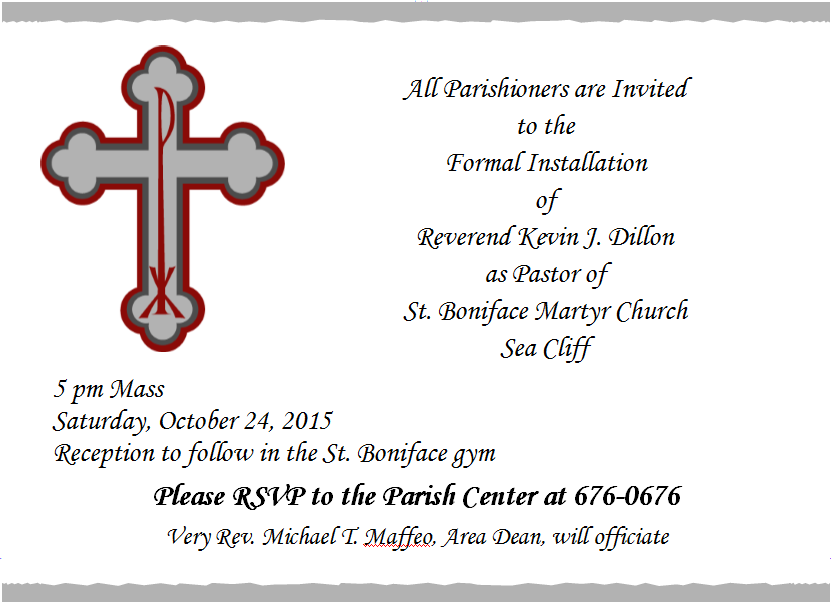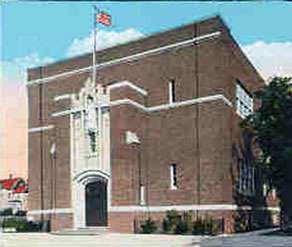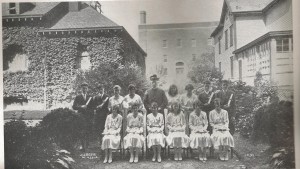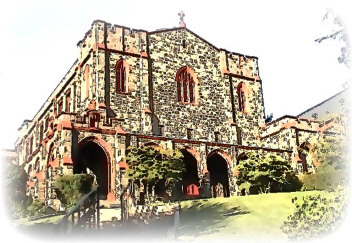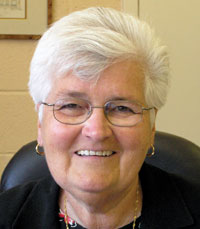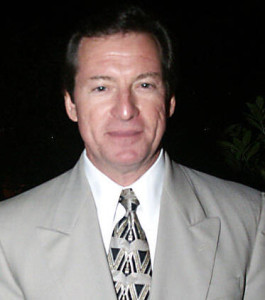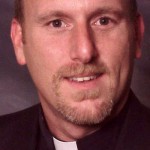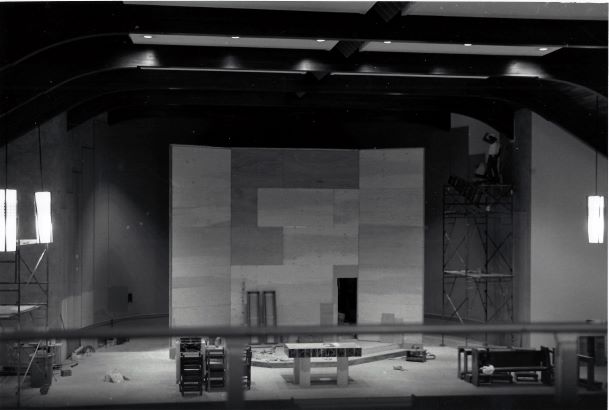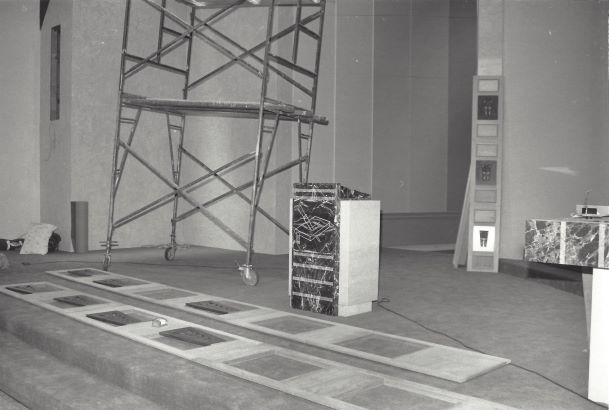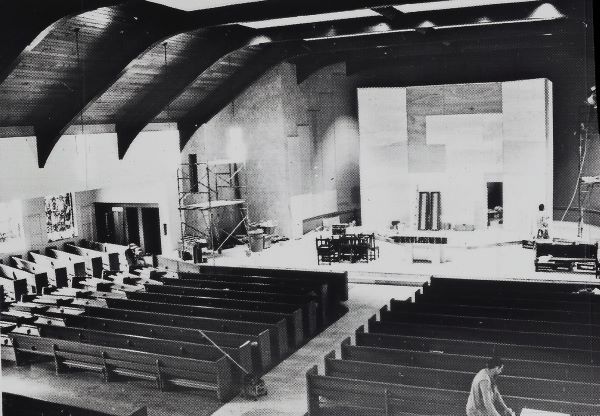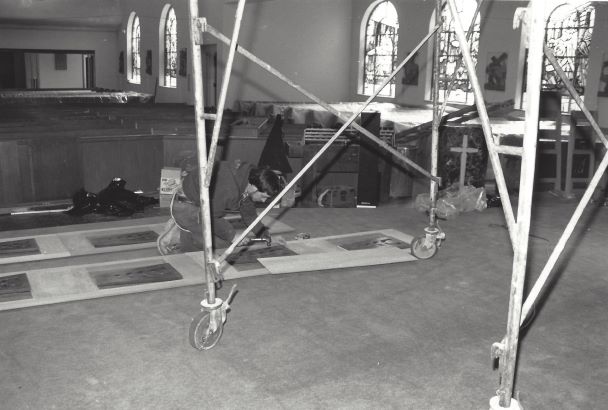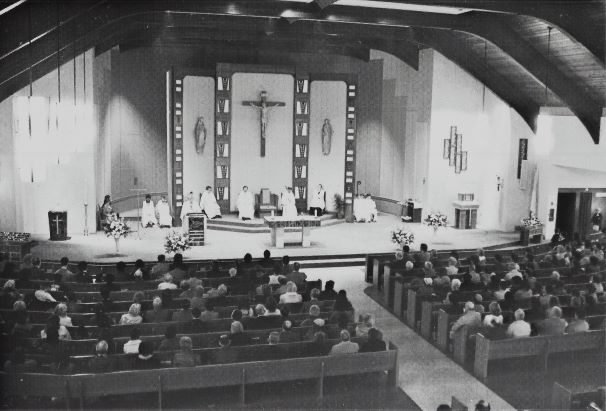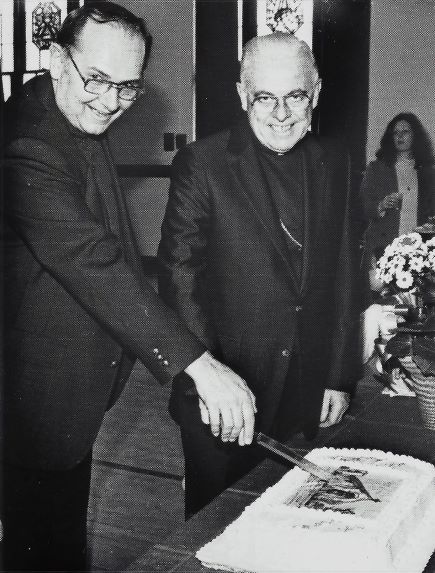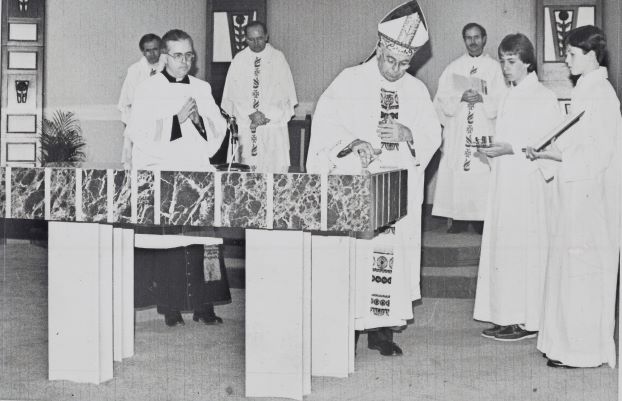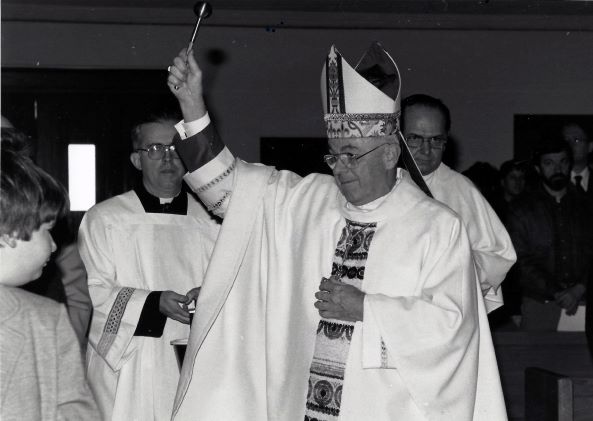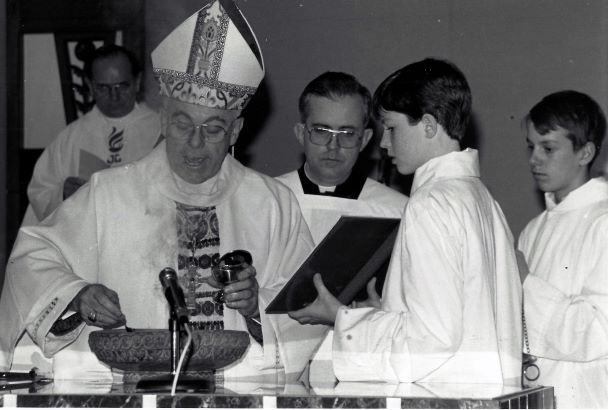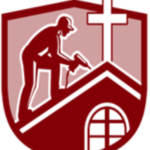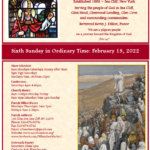In March, 2015, Bishop Murphy appointed Father Kevin Dillon as the new Pastor of St. Boniface, Martyr Parish.
Born to Gerard and Dolores Dillon in March of 1961, Father Kevin is the oldest of four children. Fr. Kevin has two sisters and one brother all residing here on Long Island. In 1965, his family moved from Brooklyn to Williston Park, where is mother still resides. He attended St. Aidan School and graduated in 1975. From there, Fr. Kevin went on to the former St. Pius X Preparatory Seminary High School where he graduated 1979.
During the 1980’s Father Kevin attended Nassau Community College and Queens College of the City University of New York where he earned a Bachelor’s Degree in English and a Master’s Degree in English Education. Fr. Kevin holds New York State Permanent Certification as a teacher of English to Secondary School students. While attending college he worked as a Training and Development Instructor for The Dime Savings Bank of New York.
Upon graduating college, Fr. Kevin taught seventh and eighth grade English in several Catholic elementary schools, including Our Lady of Fatima, Scarsdale , St. Mary’s, Roslyn, and St. Anastasia, Douglaston.
Father Kevin always felt called to the priesthood, and after his dad’s death in 1990, he thought seriously about entering the seminary, and in September 1991 he entered Cathedral Residence of the Immaculate Conception in Douglaston to begin his studies for the priesthood. From there he attended the Seminary of the Immaculate Conception in Huntington until 1994. At that time, still not completely certain if God was calling him to the priesthood, he withdraw to reflect and discern God’s plan for him. He returned to teaching and worked at several Catholic and public high schools, including St. Dominic High School, Oyster Bay, Suncoast Community High School, Riviera Beach, FL and Bishop Guertin High School, Nashua, NH.
In 2000, Father Kevin still felt called to the priesthood, and so resumed his studies for priestly formation at the Diocesan Seminary in Huntington. He was ordained June 14, 2003, and has served as Associate Pastor in several parishes of the Diocese, including St. Brigid, Westbury, from 2003-2005; Saint Jude Mastic Beach, from 2005-2007, and Saint Aidan, Williston Park from 2007-2015. After being ordained, he was appointed to the faculty of St. Dominic High School, where he taught Moral Theology and Sacraments to juniors, and Fr. Kevin will be teaching 6th Grade Religion at our Parish school, All Saints Catholic. .
Father Kevin is a fan of the New York Yankees as well as of the New York Rangers. He has a passion for fitness and exercise and enjoys working out with his trainers. He enjoys spending time with his family and friends. He likes to travel and has run several pilgrimages to Europe and the Holy Land. He also enjoys reading, and visiting book stores. Finally, he likes to sing and attended a Voice Lesson Class in Vienna, Austria where he studied with the Director of the Vienna Boys Choir and composed his own song.
[nggallery id=53]
